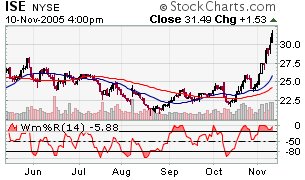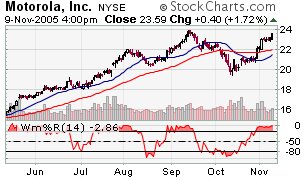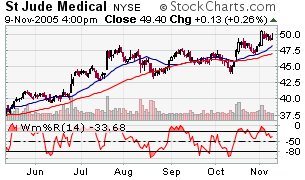
St. Jude Medical is a company with strong fundamentals in a solid group, and it has every reason to be in an uptrend. It formed an eight week base starting in August and broke above the buy point of 47 1/2 mid Oct. and up to 52, where it sold off and has returned to the 200 day moving average holding at 47 1/2. So how should you bet it?
Since the stock is still in an intermediate uptrend we look for a time and place to get long. The safest place is at the support of its long term averages when the stochastics are low and turn up, in this case when the williams% drops below -80, then heads back above it.
One way to make a bet that this stock will go higher from here is to SELL a put spread.
When the stock goes higher, the put spread will get cheaper. You can then buy it back at the lower price; or even better if the stock has moved high enough, let the price of the put spread go to zero at expiration and just pocket the money from the original sale.
The best thing about vertical spreads is that your losses are limited.
If you use strikes that are 5 points wide, like the STJ 45-50 put spread, its value will always be between $0 and $5. If you bought it for $1, the most you could lose would be $1; if you sold it for $1, the most you could lose is $4.
So let's look at the STJ Jan 45-50 put spread. With the stock at about $47.75, this put spread is trading for 2.75, or $275 apiece. Selling it there would put $275 into your acount now and if STJ went over $50 and stayed above it at the Jan expiration of those options, you would simply keep the money.
If STJ went below $45 and stayed there at the Jan expiration, you would lose the $275 plus another $225 of you own cash because the price of the put spread that you sold for 2.75, would go to 5. But you can buy it back at any time before expiration to get out of the trade, either to capture a profit or to keep from losing more.
Now with STJ in an uptrend and the stochastics about to turn up, let's paper trade the put spread, selling one at 2.75.
We'll watch it and update in the near future.





